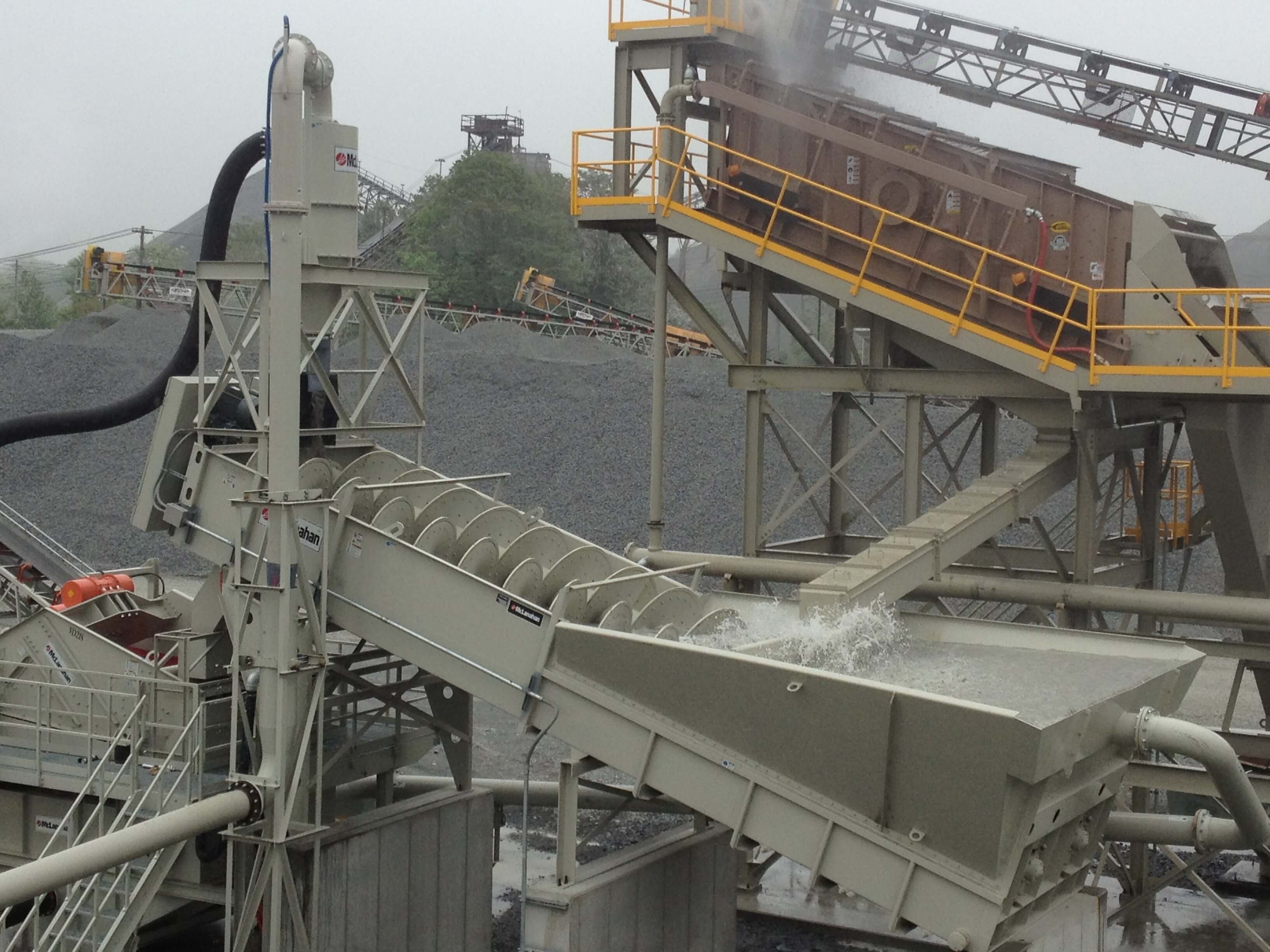Fine Material Screw Washers are a popular choice for washing and classifying sand. They can be used as a stand-alone machine or as part of a larger wet processing plant.
Also called sand screws, Fine Material Screw Washers are well-known and have been proven over decades for processing many different types of materials. They are simple-to-operate machines that produce an in-spec product that is conveyable and stackable.
However, these machines can be inefficient in that product-sized fines can be lost to the waste stream if there is a change in the flow that exceeds the screw’s design limits. A change in the feed, whether it be in the amount of solids or water being added, can cause this loss of good fines.
One way to account for the change in feed and recoup the lost material is to increase the size of your screw washer. Screw Washers must be sized for both the solids and the water in order to operate most efficiently and to provide the most effective separation.
But buying a new, larger piece of equipment isn’t always the most feasible or the most cost-effective option.
Rather than sizing up your machine to handle the increased slurry feed, you can add a Scavenger System to recover product-sized fines from the waste stream and put them back into your product pile. Not only will this lessen the amount of material filling up your settling pond, which will reduce required pond maintenance, it will also increase the amount of material in your product pile.
Say you can recover 5 tons per hour of material from the waste stream using a Scavenger System. If sand costs $20 a ton, you can make an additional $200,000 in a typical 2,000-hour operating year. This doesn’t include the savings from reduced pond maintenance, which can include both excavation equipment costs and labor costs.
With these savings, a Scavenger System can pay for itself in a short amount of time, allowing you to start seeing more profit in your pocket.

What is a Scavenger System?
A Scavenger System consists of a Pump, Sump and Separator™. The system receives the flow from the waste stream, removes the good fines and deposits them back into the product pile. Scavenger Systems can be used with many types of classification equipment to improve efficiency, but they are most commonly used to increase production of Fine Material Screw Washers.
These systems ensure your material is going to the right place, where it can make you the most money at the end of the day.
How does a Scavenger System work?
A Scavenger System can be installed into your existing operation for improved fines recovery.
In a screw washer application, the overflow from the weirs is directed to a sump instead of the pond. The slurry is then pumped from the sump up to the Separator™, which is installed over the dry deck area of the screw washer near the discharge end.
Separators™ are a variation of Hydrocyclone that include an underflow regulator attached to the apex and an overflow pipe that creates a siphon when full to keep the regulator closed. Like Hydrocyclones, they are used for classification, desliming, dewatering, fines recovery and densifying.
Installed as part of a Scavenger System, the Separator™ recovers the product-sized fines and discharges them onto the screw, where they combine with the product before it is discharged for stockpiling.
The remaining ultra-fine material and water in the slurry exit via the overflow pipe of the Separator™ and are sent to waste or additional processing equipment, such as an UltraFINES Recovery Plant.
Who can benefit from a Scavenger System?
Anyone operating a Fine Material Screw Washer (or really any wet processing equipment) should periodically sample their waste stream to determine the efficiency of their machine(s) or plant.
If you notice you have a large percentage of minus 200 mesh or 50 by 200 mesh material present in the overflow that should be going to your product pile, it may be beneficial to start modeling how a Scavenger System can help you.
McLanahan’s process engineering team can analyze your feed gradation and the amount of solids in the overflow to determine if the fines can be recovered without throwing your product pile out of spec. If adding the recovered material to your product pile is determined to be a benefit, the team will size a Scavenger System specifically for your application.
Other ways Separators™ can increase screw production
If you have a lot of minus 200 mesh material, you need to add a lot of water to the feed to ensure a Fine Material Screw Washer provides efficient separation. Feeding the screw with the underflow from a Separator™ or Separators™, which are very efficient machines, will allow your screw washer to receive a nice clean feed and perform much more efficiently.
Whether you want to recover product-sized fines from your pond to put back into your product pile or remove an excess of minus 200 mesh material prior to the screw washer, adding a Separator™ to your Fine Material Screw Washer can improve efficiency and increase production.









